Mexico´s national strategy for resilient communities
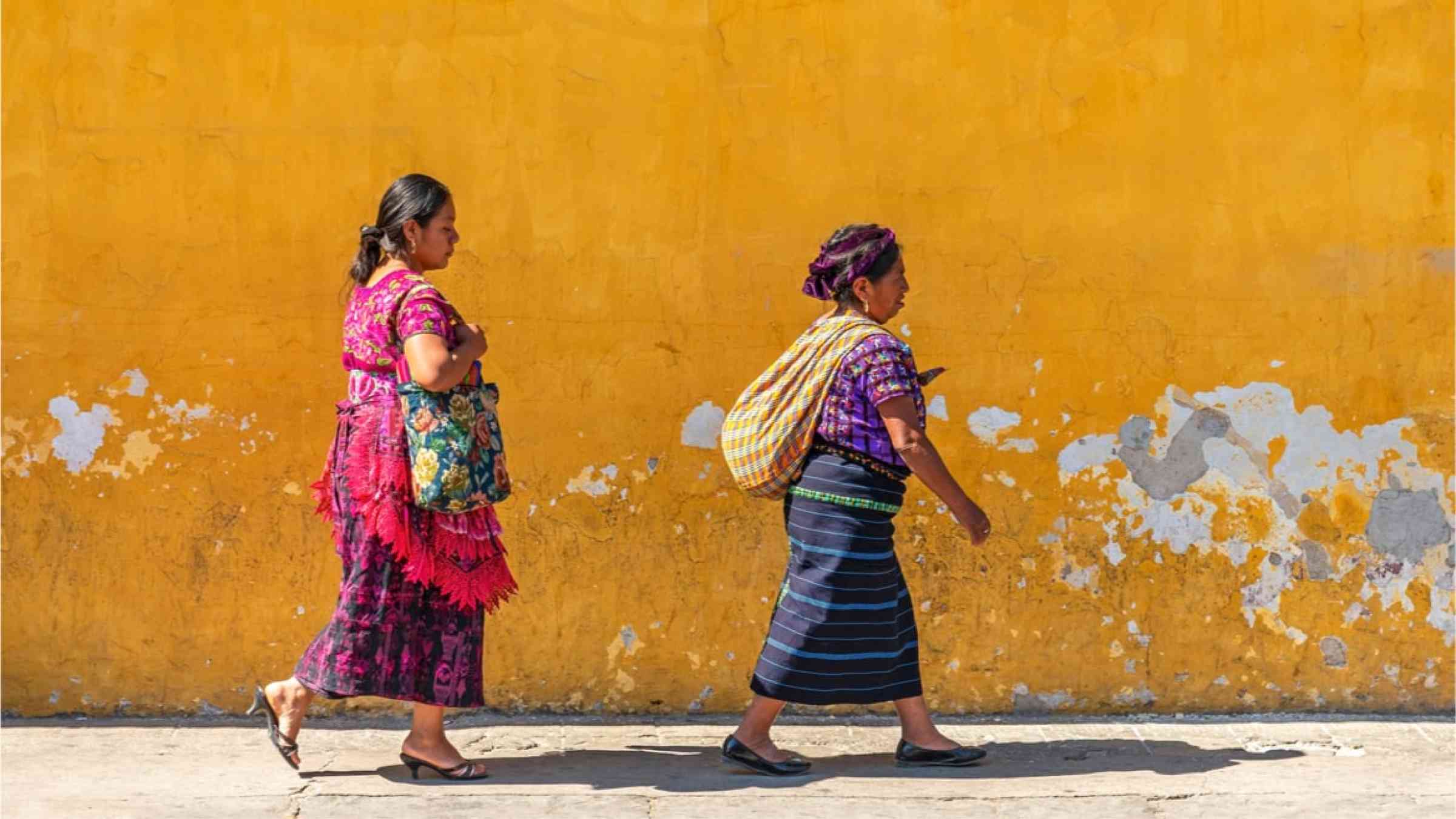
Mexico’s National Center for Disaster Prevention (CENAPRED) and the United Nations Development Program (UNDP) have jointly developed a National Strategy for Resilient Communities. This is a useful tool for communities and local governments to implement local risk management actions from a preventive perspective, thus creating safer, humane, sustainable and resilient communities.
Disaster risk reduction requires the inclusive, accessible and non-discriminatory participation of society, as well as the empowerment of local authorities and communities. Using this approach, the National Forum on Resilient Communities: Towards a national strategy from the local perspective took place on 28 October 2020, with the goal of exchanging experiences and best practices in community resilience. Participants included actors from the public sector and civil society; experts from the Civil Protection Secretariat of the Government of Chiapas, the Secretariat for Comprehensive Risk Management and Civil Protection of Mexico City; the Mexican Red Cross; and civil society organizations like Cinco Panes y Dos Peces.
The idea of creating a National Strategy for Resilient Communities (ENCR) emerged from this Forum. The ENCR was launched in 2021. The pillars of civil protection in Mexico – state and local agencies, civil society organizations, international organizations and the private sector – all participated in its design and development
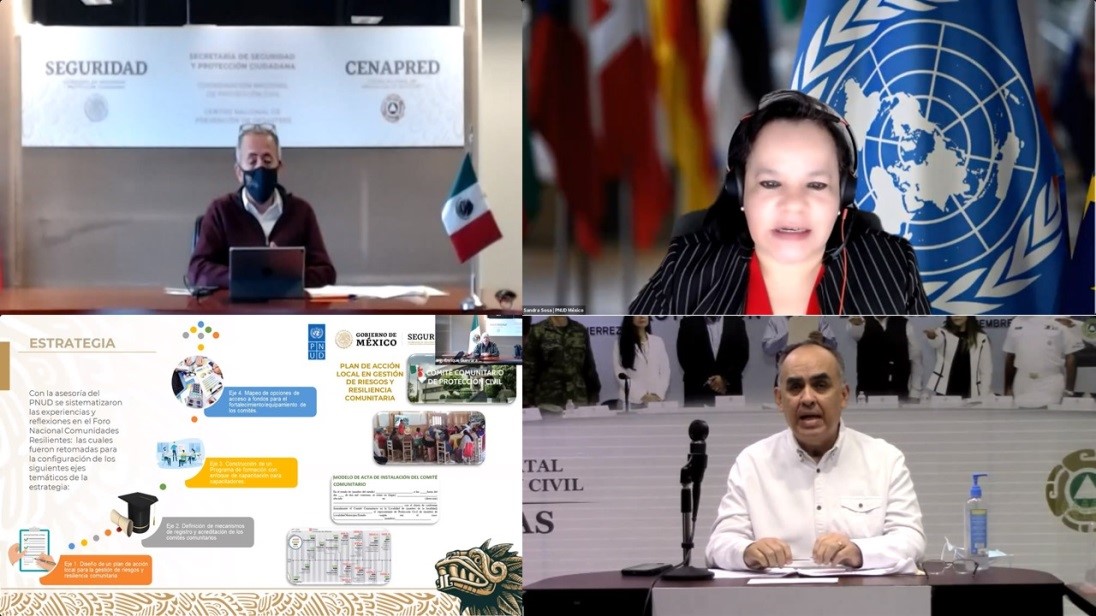
The objectives of the ENCR are the following:
- Strengthen local capacities in comprehensive disaster risk management by creating community committees trained in risk reduction and response to emergencies and disasters.
- Increase community resilience with hazard identification tools and strengthening capacities to anticipate, prevent, prepare, face and recover from the impact of hazards, whether natural or man-made – in a coordinated, organized, supportive and co-responsible manner.
Central to this strategy are the community committees. These consultative bodies promote citizen participation. Civil society representatives work in coordination and co-responsibility with local civil protection authorities.
The ENCR is based on Article 41 of Mexico’s General Civil Protection Law, and seeks to strengthen disaster prevention and reduce its negative effects on people, their property, livelihoods, infrastructure and the environment. Its four action lines are:
- Formalisation, registration and accreditation of community committees;
- Access to the training platform to train facilitators;
- Development of the community action plan on risk management and resilience; and
- Mapping and linking equipment options, access to financing, and training for community committees.
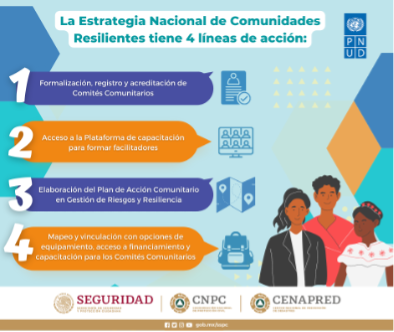
The Strategy seeks to create a far-reaching reference as a mechanism for the advancement of national and international goals and objectives – such as the Sendai Framework for Action and the 2030 Agenda for Sustainable Development Goals. It also adopts measures for the three dimensions of disaster risk: to reduce existing risks, to prevent the creation of new risks and to increase resilience capacities.
The ENCR aspires to empower communities in decision-making in terms of comprehensive risk management, by providing tools, improving recovery practices, and by creating and strengthening networks between communities, the public sector and civil associations.
The consolidation of the ENCR included a plural forum, in which experts from the public and private sectors shared their knowledge on community resilience and the implementation of local risk management actions. The value of this event was the exchange of experiences, best practices, and learning the process of building links among communities and institutions.
This exchange of experiences was the starting point for the design of a strategy to concentrate knowledge into the Community Action Plan on Risk Management and Resilience. This document defines the objectives, scope, actors involved, and the design of actions to give continuity to the governance and community empowerment processes in terms of risk reduction.
Once the preliminary version of the plan was finished, feedback and validation workshops were held with representatives of the public, private and social sectors. The final document reflected the contributions and recommendations of the participants.
In this regard, the process towards the ENCR included the contributions of institutions of the federal public administration, including the Welfare Ministry; the Ministry of Territorial and Urban Development (SEDATU); the National Institute of Ecology and Climate Change (INECC); the National Forestry Commission (CONAFOR); and the National Institute for Women (INMUJERES); heads of State and Municipal Civil Protection Units; as well as members of civil society, academia and the private sector.
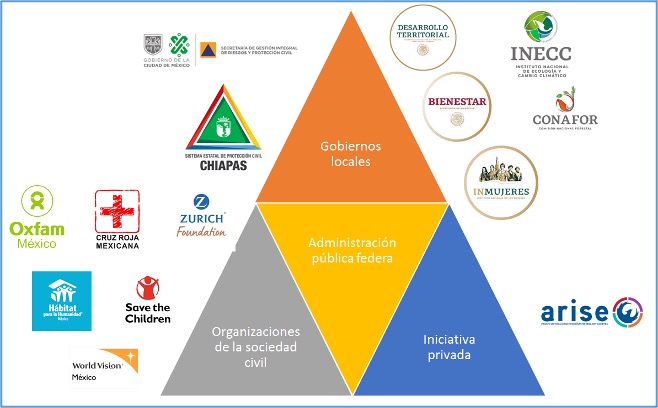
Working with allies to strengthen and promote community resilience built recognition of the need to unify and concentrate the work carried out with communities. For this reason the project created a website focusing on the pillars of the National Strategy.
The platform, located within the National Atlas of Risks, houses a basic guide to generating a Community Action Plan in Risk Management and Resilience, the registration and accreditation module of the Community Committees; as well as useful reference material to strengthen capacities to anticipate, prevent, prepare, cope and recover from the impact of natural hazards.
In March 2022, the website was launched and introduced to state and local civil protection representatives around the country, with positive reception. As a result, follow-up work spaces were opened.
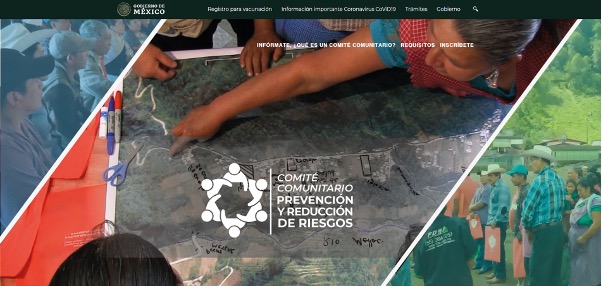
This is not an isolated effort: on the contrary, it reflects experiences, knowledge and practices of organizations and institutions. The implementation stage of the strategy – the current phase – requires that we continue to join forces and take advantage of synergies, to promote more sustainable, safe, humane, and resilient communities and societies.
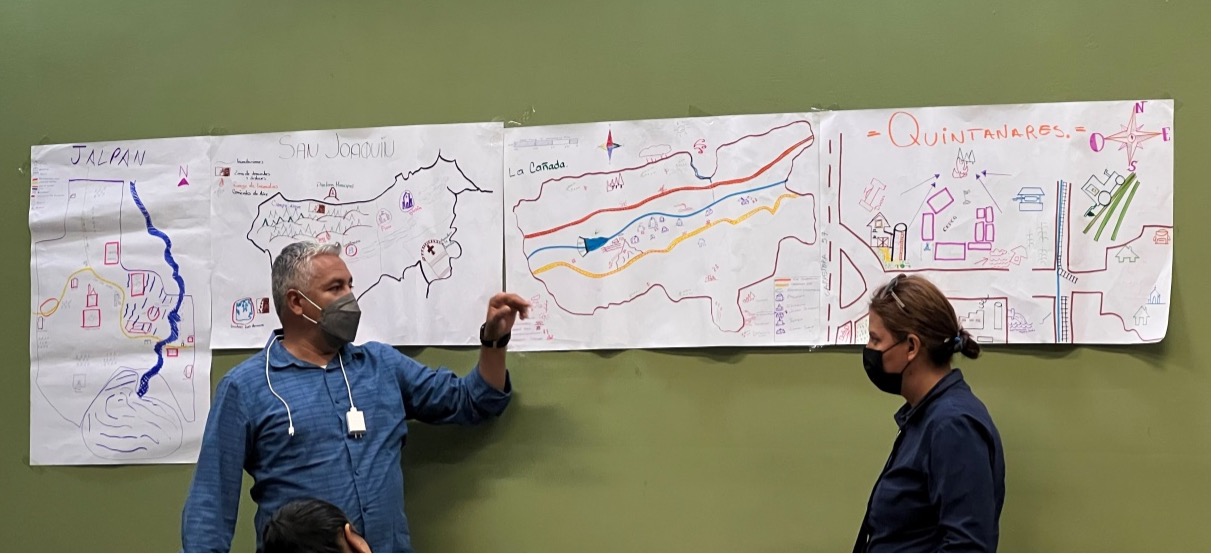
MIKTA is a diverse and cross-regional grouping of powers that brings together Mexico, Indonesia, the Republic of Korea, Turkey and Australia. Given the growing challenges our planet is faced with, including disasters from droughts, desertification, loss of biodiversity, food shortages, water scarcity, wildfires, and sea-level rise, MIKTA has reiterated its commitment to investing more in research, innovation and infrastructure to strengthen environmental sustainability, adaptation, and resilience against the adverse effects of climate change and disaster risks. In line with this commitment, MIKTA undertakes a joint advocacy campaign highlighting the triple benefits of investing in prevention to accelerate disaster risk reduction, protect development gains and build resilient communities.
The campaign promotes diverse local and regional examples of efforts by the MIKTA members to strengthen disaster risk resilience through investing in prevention. Through sharing of experiences and good practice, the campaign aims to strengthen global adaptation and resilience efforts and build global consensus around the need to accelerate disaster risk reduction efforts.
This article is part of a series of impact stories to generate ideas and solutions in line with the overarching and main themes identified for GP2022.